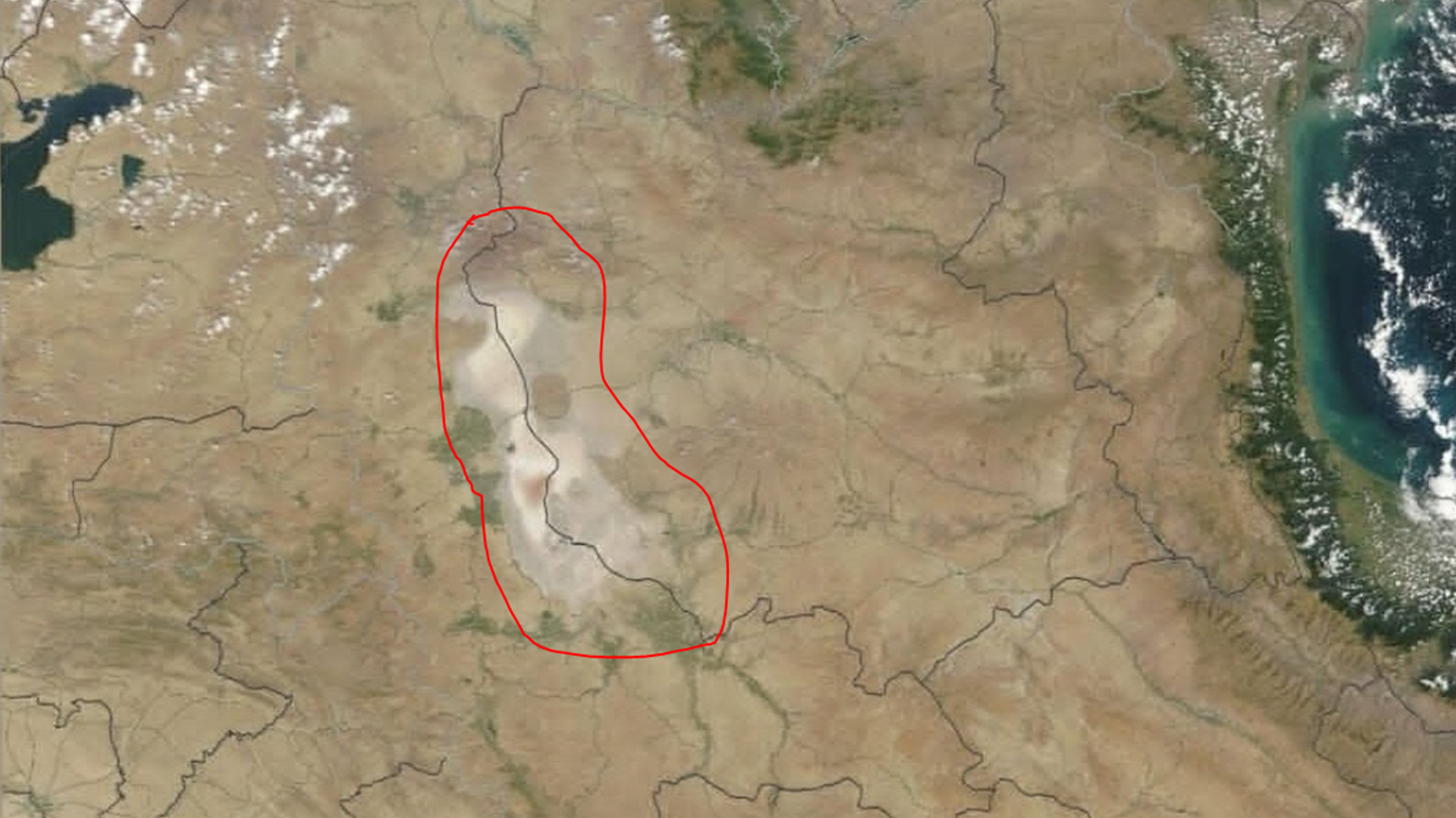'Lake Urmia Has Become Part of History,' Report Declares as NASA Images Confirm Complete Disappearance
NASA images have confirmed the complete disappearance of Iran's Lake Urmia, once one of the world's largest saltwater lakes, according to a report by Ettelaat Online. The 4,000-year-old "turquoise jewel" has entirely dried up, signaling a major environmental catastrophe.

ERBIL (Kurdistan24) – In a devastating confirmation of a long-forewarned environmental catastrophe, the latest satellite imagery from NASA has revealed the complete disappearance of Lake Urmia, once Iran's vibrant "turquoise jewel" and one of the largest saltwater lakes on Earth. According to a stark report from the Iranian news outlet Ettelaat Online, the once-vast body of water in northwestern Iran has now entirely dried up, with the aerial photographs showing no remaining trace of the lake, signaling the tragic end of a 4,000-year-old ecological and cultural cornerstone.
The grim outcome, the report noted, was not unexpected. Environmental officials in Iran had issued dire warnings at the beginning of the summer, predicting that the lake would be 100 percent dry by the season's end. NASA's stark, earth-toned images now serve as the final, indisputable evidence that this prophecy has come to pass, marking a point of no return for an ecosystem that has sustained life in the region for millennia.
Lake Urmia, situated between the West and East Azerbaijan provinces of Iran, was a natural wonder of immense significance.
As previously detailed in reports by Ettelaat Online, it once spanned approximately 5,700 square kilometers with a depth of over 10 meters, ranking it as the world's second-largest saltwater lake. Its importance was multifaceted, playing a critical role in the region's climatology, economy, and social fabric.
It was a vital habitat for unique species, most notably Artemia urmiana, a brine shrimp that formed the keystone of the food chain for vast flocks of migratory birds, including flamingos, pelicans, and wild ducks, whose annual visits were a celebrated natural spectacle. The lake's massive surface area also acted as a crucial climate regulator, influencing humidity and moderating temperatures across northwestern Iran.
The lake's demise has been a slow-motion disaster, driven by a combination of human activity and climatic shifts. In recent years, a perfect storm of environmental pressures has led to its drastic decline.
These include excessive water extraction from both surface and underground sources to fuel an expansion of water-intensive agriculture, the unrestrained construction of dams on the rivers that once fed the lake, and a significant reduction in regional precipitation.
The statistics charting its collapse are staggering.
Official data previously reported by Ettelaat Online showed that the lake's surface had shrunk by as much as 95 percent compared to its long-term average. Its water volume, which was around 30 billion cubic meters in the 1990s, had plummeted to less than one billion cubic meters in recent years.
Iran's Deputy Head of Environmental Protection had recently described the water level as being at an "unreportable" low, stating that if it fell any further, "there will be no figure to announce, as this is the minimum possible." He confirmed that the water volume had dropped from 2 billion cubic meters to just 0.5 billion cubic meters in the span of a single year.
The consequences of this complete desiccation are expected to be catastrophic, extending far beyond the loss of an ecosystem. The vast, exposed lakebed, now a saline desert, poses a severe threat to human health and well-being.
Environmental experts have repeatedly warned that the drying of Lake Urmia will lead to an increase in the frequency and intensity of salt storms, which can carry toxic particles over great distances, causing severe respiratory illnesses for millions of people.
Some researchers have cautioned that the complete disappearance of the lake could place between 6 and 15 million people at risk, triggering a massive wave of environmental migration as agriculture collapses and living conditions become untenable. The economic toll of such a displacement, through damage to infrastructure and the regional economy, has been projected to reach trillions of dollars.
In the face of this escalating crisis, Iranian officials have been scrambling for solutions.
The Governor of West Azerbaijan recently confirmed that several high-level meetings were held in Tehran and that proposals for the lake's restoration had been received from a Chinese company and a joint Iranian-Chinese-Japanese consortium. However, these late-stage efforts appear to be too little, too late.
Experts from Urmia University are also preparing a report on potential solutions, but even officials acknowledge that fundamental changes, such as altering cropping patterns and modernizing irrigation methods, are crucial and must be prioritized.
With NASA's latest images now confirming the complete vanishing of Lake Urmia, the "blue jewel" of northwestern Iran has transitioned from a living, breathing ecosystem into a stark and tragic historical landmark—a potent symbol of the devastating consequences of environmental mismanagement and climate change.